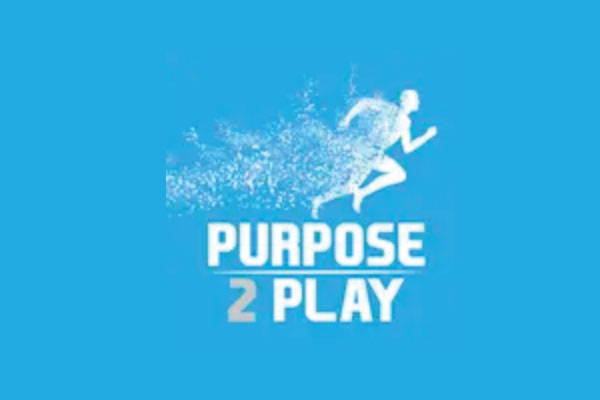Hector Picard, 49, was never an endurance athlete. However, once he became a double-arm amputee, everything changed. Since 2009, Picard has completed over 100 triathlons, including multiple Ironmans.
If you’re thinking, how does a man without arms swim and bike, you’re not alone.
“I have total faith in what I can do,” Picard said.
Ever since a work accident sent 13,000 volts of electricity through his body twice, leaving him without a right arm and half a left, the Ft. Lauderdale resident has had to adjust, shift, and trust in the new life that was given to him.
Adjusting to Loss
As an electrician in 1992, Picard was working on a substation transformer, which supplied power to an entire neighborhood. At the end of the day, he had to remove equipment from the transport when his right arm inadvertently touched the activated side. A 13,000-volt charge went through his right arm, down his side, and blew off the top of his foot. As he was falling from the initial electrocution, he reached out with his left hand and got hit with another 13,000 volts before falling two stories as he was on fire.
Picard was in a coma for 30 days. When he woke up, his arms were gone, and he had 2nd and 3rd degree burns covering 40% of his body.
“All I could do was think about my 1-year-old daughter and my wife,” Picard said. “As soon as I started getting better, I started thinking about not the things that I couldn’t do, but about the things that I needed to get back to like feeding myself and holding my daughter.”
Through intense rehabilitation, Picard learned how to use the prosthetic arm, and even built a device for the arm that allowed him to shoot a basketball. Getting accustomed to a specially-designed hand allowed him to handle the more nimble daily tasks such putting toothpaste on his toothbrush.
Swim, Bike, Run
In the years following the accident, Picard had another daughter, got his real estate license, and eventually split from his wife in a “nasty” divorce.
After the divorce, Picard decided to enter his very first triathlon, just to see if he could do one. So, he entered Florida’s Independence Day Triathlon, where he took on the sprint distance (half-mile swim, 12.4-mile bike, 3.1-mile run).
“I was allowed to use fins for this first race, but as soon as I was 10-feet from shore, one of my fins came off so I dropped them and developed a frog-like kick to get me through the water,” Picard said. “At that point, I said I wouldn’t rely on anything like that ever again. Now I swim on my back and use my legs to propel myself through the water.”
Picard’s bike is built so that he can brake with his right knee and shift gears with his chin using an electric system. He steers with his residual left arm. In transition zones, he doesn’t even have to use his prosthesis to change attire and switch out his gear.
“I do all of it using my teeth, feet or my residual limb,” Picard said.
The Racing Life
Since that first race in 2009, Picard has completed Ironmans, half-Ironmans, a cross-country bike ride from Miami to Spokane, a 300-mile bike ride in 24 hours, and three 5+ mile swims.
“I hear a lot of, ‘Wow, you’re an inspiration’ out on the race courses,” Picard said. “I’ve had people come up to me and tell me they were thinking about quitting and saw me on the course, and that pushed them to continue. I get a lot of ‘thank you’s,’ and a lot of hugs; People want to take pictures with me. I’m not afraid to challenge myself and push myself hard. That really feeds my fire when people are inspired by what I do.”
Picard makes his living as a motivational speaker and as a professional triathlete with Novation Settlement Solutions being his sponsor.
“It’s a whole new life, a whole new career,” Picard said.
His “new life” also includes finding another woman, whom he married five years ago.
Using his Platform
This October, Picard will try to become the first double-arm amputee to finish the Ironman World Championship course in Kona. Then in 2016, he will complete 25 triathlons, each benefiting a disabled child from the Broward Children’s Center.
“I want these kids to experience things that I’m fortunate enough to be able to experience,” Picard said. “I’ll carry a picture of a child from the center with his or her story as I do these races. If I get a finishers medal, or if it’s a placement medal, then we’ll have an award ceremony a couple of days later at the center, and I’ll hand the award to that child; it will almost feel like that child was with me when I completed the event. I want kids with disabilities to see someone like them who is accomplishing big things.”
Picard’s message is clear: Don’t dwell on those with disabilities.
“I want people to look at us as equals with just some minor differences,” Picard said. “If you think of me as a disabled guy during a race, believe me, I’m training and working my butt off to pass you up. I have no problem with my disability. I live with it everyday, and I don’t see myself any different than anybody else.”
That’s more than 26,000 volts of power right there.
Follow Hector Picard at Don’tStopLiving.org and on Twitter.




